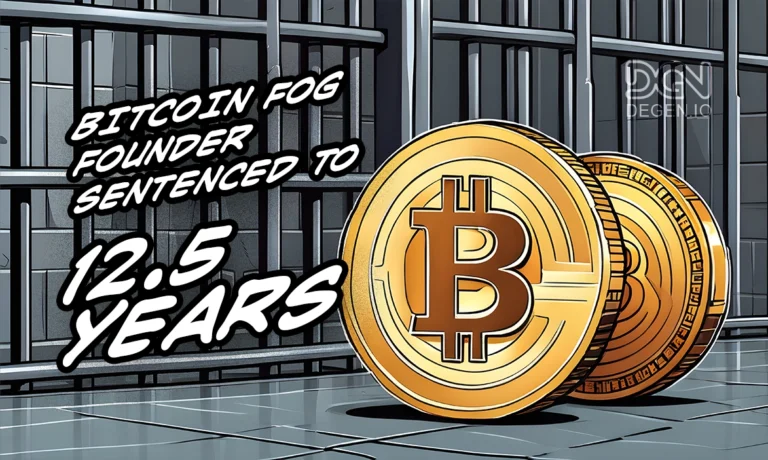Charles Hoskinson, the founder of Cardano and a pioneer in blockchain technology, has confirmed his role as an advisor to the Trump administration on cryptocurrency policy. With a mission to create a more transparent regulatory framework, Hoskinson aims to foster bipartisan support to push forward legislation, notably through Cardano’s Input Output Global (IOG). Here’s how Hoskinson’s new role could reshape the future of crypto regulation in the U.S.
Also read: Can Worldcoin (WLD) Reach $2 After a 10% Jump?
The Cardano Vision: A Push for Clear, Fair Crypto Laws

Cardano’s Regulatory Goals Under Hoskinson’s Guidance
As the founder of Cardano, Hoskinson has been a staunch advocate for blockchain’s integration into financial systems. His aim with this new role is to collaborate with both Democrats and Republicans to pass bipartisan crypto legislation that clarifies regulatory boundaries, such as the Financial Innovation and Technology for the 21st Century Act (FIT21) and the Responsible Financial Innovation Act (RFIA). He envisions a policy landscape that promotes innovation while balancing regulatory oversight.
Key Elements of Hoskinson’s Proposed Framework
Hoskinson’s policy goals include:
- Legal Clarity: Defining assets like securities and commodities in the crypto realm to reduce uncertainty.
- Innovation Encouragement: Establishing guidelines that allow blockchain projects to grow without burdensome restrictions.
- Bipartisan Support: Collaborating with lawmakers from both parties to ensure comprehensive support for crypto-friendly policies.
Creating a Dedicated Policy Division at Input Output Global
To advance these goals, Input Output Global (IOG) will establish a dedicated office for policy development, expected to be operational by early 2025. This office will focus on coordinating with lawmakers to ensure industry-friendly bills gain traction in Congress. By engaging directly with key political players, IOG aims to create a balanced environment that encourages innovation while addressing security and compliance concerns.
Navigating Political Challenges in Crypto Legislation
The U.S. Political Landscape and Crypto Regulations
The crypto industry faces a challenging landscape, as regulatory bodies like the Securities and Exchange Commission (SEC) have often taken a cautious approach. Hoskinson’s new advisory role could help alleviate these challenges by building a bridge between crypto innovators and policymakers, promoting a fair yet firm stance on compliance.
Overcoming Regulatory Roadblocks
Hoskinson’s approach emphasizes dialogue over division, aiming to bring clarity to ambiguous policies that have stifled innovation. He stresses that the industry seeks only clear rules rather than subsidies or bailouts, expressing hope that regulatory certainty will bring new opportunities and growth for crypto and blockchain companies.
Cardano’s Market Surge Following Regulatory News
ADA’s Strong Market Performance
News of Hoskinson’s advisory role has positively impacted Cardano’s ADA token, which saw a 20% price increase, reaching a seven-month high. ADA’s recent growth reflects investor optimism for a regulatory environment that supports the cryptocurrency industry’s expansion. If these trends continue, analysts project a potential rally for ADA, with the token potentially reaching $1 in the coming months.
Technical Analysis and Price Predictions
ADA has shown significant strength, breaking key resistance levels with notable support from bullish market sentiment. If regulatory improvements continue under Hoskinson’s guidance, ADA could further benefit as market confidence grows in crypto’s long-term potential.
Why Hoskinson’s Advisory Role Matters for the U.S. Crypto Industry
Charles Hoskinson’s alignment with the Trump administration could mark a pivotal moment for cryptocurrency in the U.S., paving the way for new regulations that support blockchain innovation. By fostering a balanced regulatory environment, Hoskinson aims to contribute to job creation, economic freedom, and technological advancement in the crypto sector.
The Cardano founder’s work in this role represents a step forward in establishing crypto’s place in the U.S. economy, potentially creating “trillions of dollars of value and millions of jobs.” The entire crypto ecosystem, including major players like Bitcoin and Ethereum, stands to benefit from this new chapter in U.S. regulatory development.
With significant connections in the political sphere, Hoskinson’s approach could help define a new era for blockchain policy, benefiting not only Cardano but the broader crypto landscape. Investors and blockchain enthusiasts alike will be closely watching his progress in shaping crypto-friendly regulations in the coming years.
Also read: Bitnomial Sues SEC Over XRP Security Classification


















